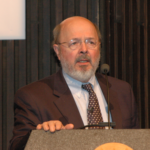Legislation is being considered at the federal and state levels to slow the onset or ameliorate the effects of global warming. These laws typically seek to reduce greenhouse gas emissions or increase the amount of carbon dioxide that is stored, or “sequestered,” in trees, agricultural soil, or harvested products.
Reducing greenhouse gas emissions, the first option, is likely to be extremely damaging to farming and related industries. Specifically:
- Emission reduction programs are very expensive and slow economic growth. Best available research suggests reducing emissions to 7 percent below 1990 levels by the year 2010 would reduce gross domestic product (GDP) by $300 billion to $400 billion a year and destroy 2.4 million jobs. Energy prices would rise 55 percent to 85 percent. Average household income would fall approximately $3,300 (in 2001 dollars).
- State greenhouse gas control programs would be 10 times as expensive. States that attempt to “go it alone” will find the cost of reducing greenhouse gases will be far greater than for a national program. States cannot take advantage of lowest-cost opportunities outside their borders, must rely on costly command-and-control regulations, and will see some or all of their emission reductions offset by increases in emissions in other states.
- Farmers would be especially hard hit by higher energy prices. A national program to reduce emissions to 7 percent below 1990 levels by 2010 would require higher energy prices equivalent to a tax on gasoline of approximately 50 cents per gallon. Such a tax would cause net income for farmers to fall by 15 percent to 44 percent (depending on the crop). Total annual U.S. farm production expenses would rise more than $23 billion, reducing net farm income by 51 percent.
Because emission reduction costs are so high, policymakers are turning their attention to biological carbon sequestration programs, which offer to pay farmers and ranchers to adopt practices that increase the amount of carbon their soil stores. But biological carbon sequestration faces daunting problems of its own:
- Many farmers and ranchers would pay more for emission permits and other regulations than they would earn by sequestering carbon. Total greenhouse gas emissions from agricultural activities in 2001, according to EPA, were 35 times greater than the net amount of carbon dioxide being sequestered that year in agricultural soil. Organic soils are net emitters of carbon and probably cannot be managed to store more carbon. Livestock production, including dairy farming, is a particularly large net source of greenhouse gases.
- Environmentalists will be disappointed, too. Even if a biological carbon sequestration program benefitted farmers, it would do little to moderate global warming. Agricultural soils sequestered less than 1 percent of total U.S. greenhouse gas emissions in 2001. Even doubling or tripling the use of conservation tillage would offset only 2 or 3 percent of total emissions, and once soil is saturated with carbon, there could be no more gains.
- Sequestration efforts in the U.S. could be offset by changes in land use in Third World countries. The biggest opportunities for carbon sequestration lay in planting trees on cropland and meadows. But subsidizing tree planting would reduce U.S. farm exports and prompt more farm output in countries without artificial constraints on farming. This would lead to more deforestation in Third World countries and a net increase in carbon emissions.
Emissions trading has been proposed as a way to lower the cost of reducing greenhouse emissions and to generate the revenue necessary to reward farmers who sequester more carbon in their soil. But emissions trading is more problematic than its advocates admit:
- Identifying the sources of carbon dioxide would pose a bigger challenge than faced by any emissions trading program now operating. Unlike chemicals targeted by existing emissions trading programs, carbon dioxide is not a pollutant that can be traced to a small number of sources. Carbon dioxide is ubiquitous and most of it comes from natural sources.
- Verifying emission reductions would be difficult or even impossible. Estimates of emission reductions vary depending on whether the unit of measurement is project-specific, facility-wide, whole life-cycle, short-term, or long-term. For example, emissions can be technically reduced by outsourcing some activities (such as electricity generation), even though total emissions associated with a unit of output are left unchanged or even increase.
- Existing programs have not been as successful as their proponents claim. Emissions trading programs now in operation around the country are characterized by thin markets, government over-regulation that kills innovation, changing rules that leave investors high and dry, verification problems, and government meddling. Rather than demonstrate the potential benefits of a greenhouse gas trading program, these programs should make farmers and investors wary of promoters who make promises they cannot keep.
We conclude that proposals to cap or reduce greenhouse gas emissions pose a very serious threat to the agricultural industry in the U.S. Programs that offer to pay farmers to sequester carbon are likely to lead to higher energy costs and new regulations that would outweigh whatever revenue farmers might earn. Farmers and their allies should forcefully oppose greenhouse gas control programs at both the national and state levels. Such programs are unnecessary, enormously expensive, and particularly injurious to the agricultural community.





